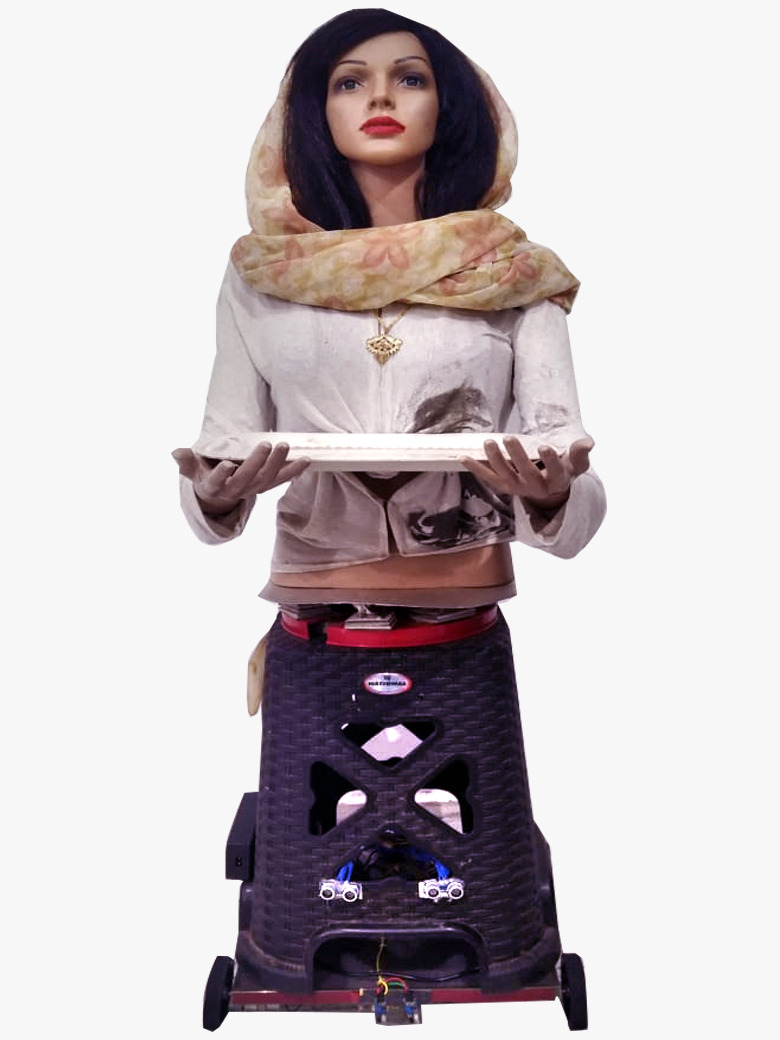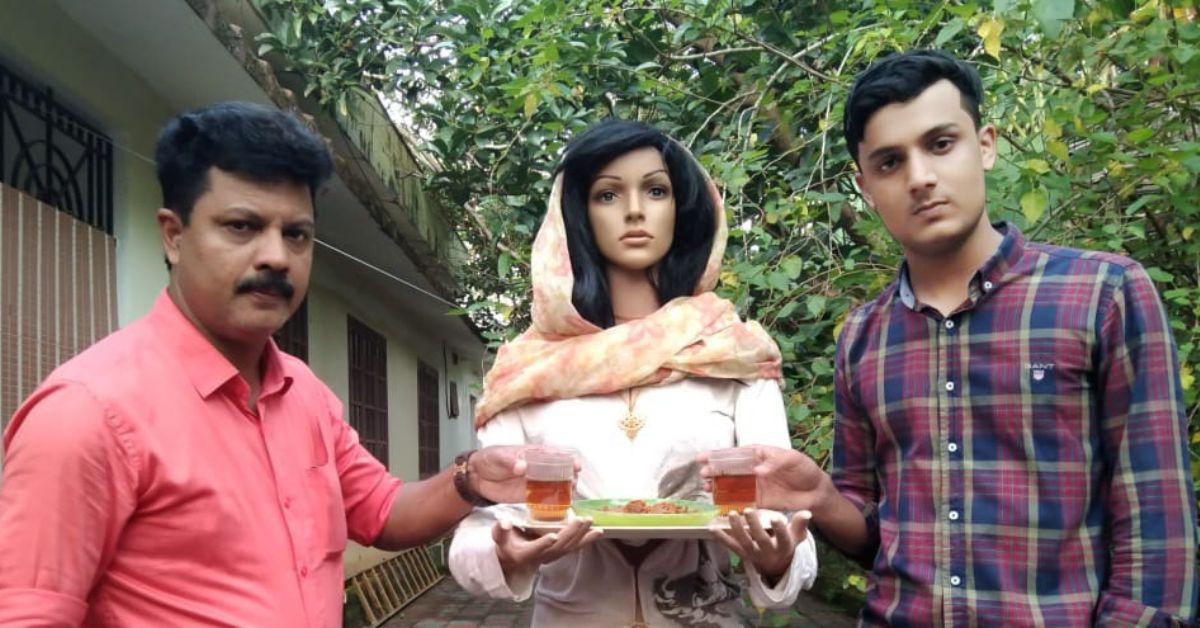In 2019, while dining in a Kannur restaurant, Muhammed Shiyad Chathoth and his family were served by a robot. Shiyad’s mother Sareena instantly uttered, “It would be so great and useful if we had such a robot in our home.”
“I can make a similar robot for you amma (mother),” was her then-14-year-old son’s reply. Even though Sareena took it as a joke, Shiyad, who had already done a few home automation projects, was serious about keeping his promise.
“Earlier, I had developed a mobile application to control lights, fans and every other electrical device in the house. So I was confident about this robot project too,” says the teenager to The Better India.
As a first step, Shiyad inquired about the machine at the same restaurant and he got a response that it cost Rs 3 lakh to 4 lakh. But later through his research, he discovered that there are cost-effective ways of building such a system.
“There is no direct information available on the Internet about putting together a robot. But I noticed that the machine in the restaurant was following a fixed path. My research led me to find many videos that explained this tech,” says the 17-year-old.
Within a year, Shiyad came up with a basic model by fixing a plastic stool and an aluminium platform under it with four tyres. A 12-volt gear with a motor was used for the movement. But he faced several challenges to convert it into a human-like robot.
“The upper part of the robot, where I fixed a female dummy, needed to rotate 180 degrees to take and serve food from the kitchen to the dining table. I struggled a bit with the mechanical part here. It was only last month with the help from a classmate, Arjunan, that the coding was perfected and the robot ‘Pathooty’ came into action,” shares Shiyad who is a class 12 Computer Science student of E K Nayanar Memorial Government Higher Secondary School, Vengad.
Asked why he chose a female dummy for his robot, he says, “I asked my mother what appearance she prefered for the robot, and she said she wanted a female figure. I was aware of the fact that this might imply a gender stereotype but I went with her choice.”
Without skipping a beat, he adds, “All of us, including my brother, father and I are equally involved in household chores. We don’t intend to share a wrong message with this innovation.”

His father suggested the name ‘Pathooty’ to indicate the ‘path’ of black insulation tape the robot followed from the kitchen to the dining area. “People also call it ‘Android Pathooty’ as a reference from a Malayalam movie – Android Kunjappan (2019) that narrates the tale of a robot that does household chores,” says Shiyad.
“The distance from the kitchen to the dining hall in our home is slightly longer than usual. Sareena always complains about this, especially during mornings when everybody is running late for school and work. Now Pathooty moves to and fro to serve us food and other things. Also, it reminds us about my mother’s medicines and even serves them to her,” says Abdul Rahman, Shiyad’s father.
Shiyad says that the total cost of building the robot was less than Rs 10,000. “It could have been cheaper but since I did it as an experiment, there were too many failures and re-purchases,” he adds.
Rahman recalls, “One time, the robot even poured curries on us at the dining table. It was quite funny and equally annoying.”
The robot is controlled by an ultrasonic sensor. Additionally, a mobile application has been developed through the MIT app and Admega MicroController. It can work both manually and automatically as well as carry a load of up to 6 kg.
Pathooty also wakes up the family every morning. “If the coffee is ready, it will serve us in bed too,” says Shiyad.
Today, people from all over the state are visiting Shiyad’s house in Kannur to meet Pathooty. He also receives invitations for tech events happening at various locations in Kerala.
Shiyad’s next plan is to make Pathooty travel without pre-setting the path using tape. “If the technology is changed from a microcontroller to a microprocessor, it can even do other activities like floor cleaning, washing utensils and preparing food,” he says. “This will take some time but I will reach there for sure.”
Sareena says, “Pathooty has been a real help in our home. Whenever the food is ready, it takes it to the dining table, brings us cutleries and carries any other items back and forth. Now I wish it could do other household chores too which Shiyad is trying to implement.”
The teenager is dreaming big by launching a startup called Automation Robotics with a few of his classmates. “We are hoping to get a patent for Pathooty and come up with new ideas in home automation in the future. Also, my greatest dream is to study engineering at the Indian Institute of Technology in any city.”
Shiyad also adds that from day one, it is curiosity that drove him towards innovations. “I won’t call this an innovation. By building a robot, I was trying to answer the question of how it was made. While some settle for theoretical answers, that never works for me. I want to see it in practice. And as everyone around me, especially my father, are ardent supporters, the process becomes easy.”
Edited by Yoshita Rao
Photo credits: Abdul Rahman
If you found our stories insightful, informative, or even just enjoyable, we invite you to consider making a voluntary payment to support the work we do at The Better India. Your contribution helps us continue producing quality content that educates, inspires, and drives positive change.
Choose one of the payment options below for your contribution-
By paying for the stories you value, you directly contribute to sustaining our efforts focused on making a difference in the world. Together, let's ensure that impactful stories continue to be told and shared, enriching lives and communities alike.
Thank you for your support. Here are some frequently asked questions you might find helpful to know why you are contributing?

